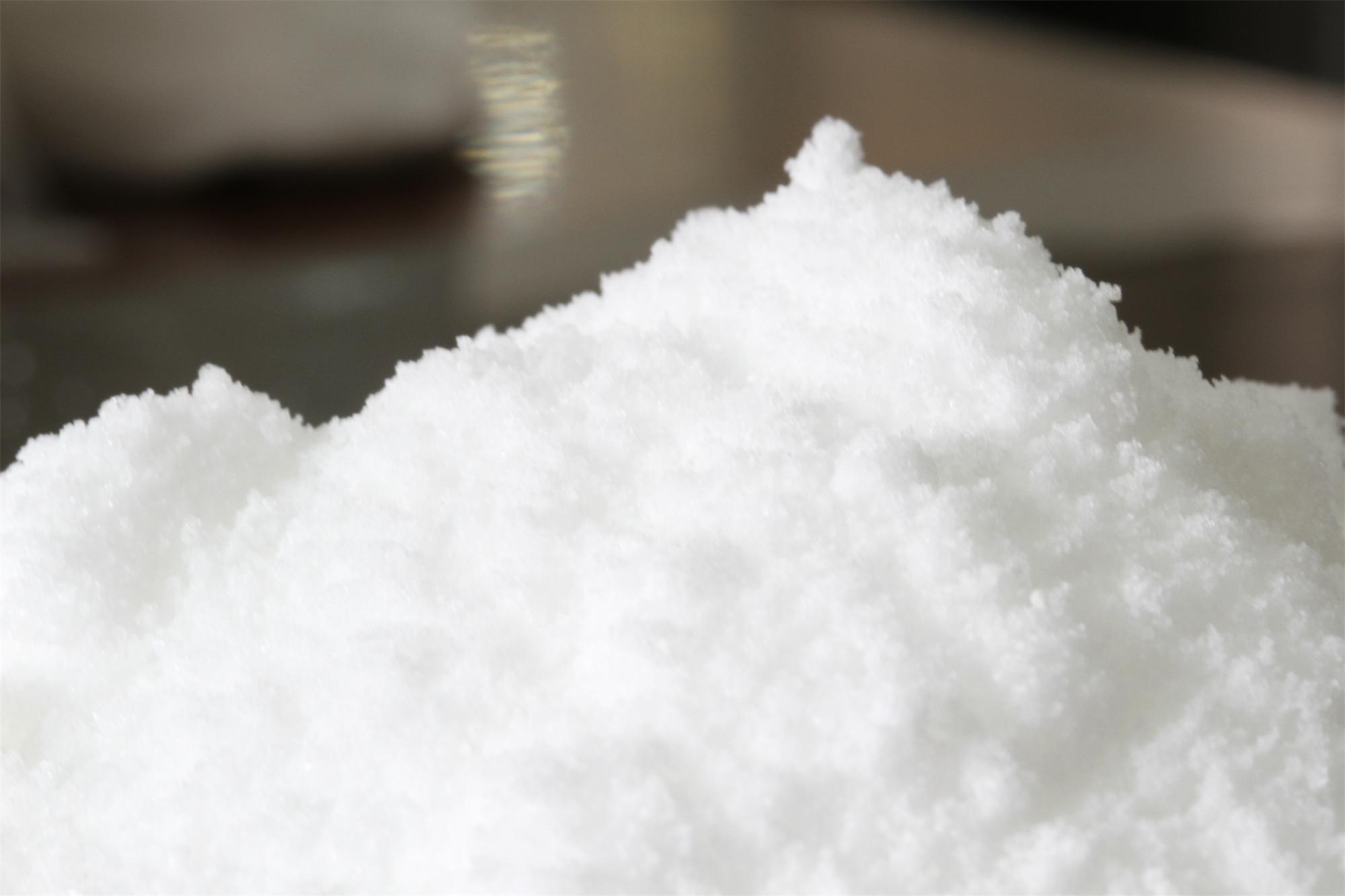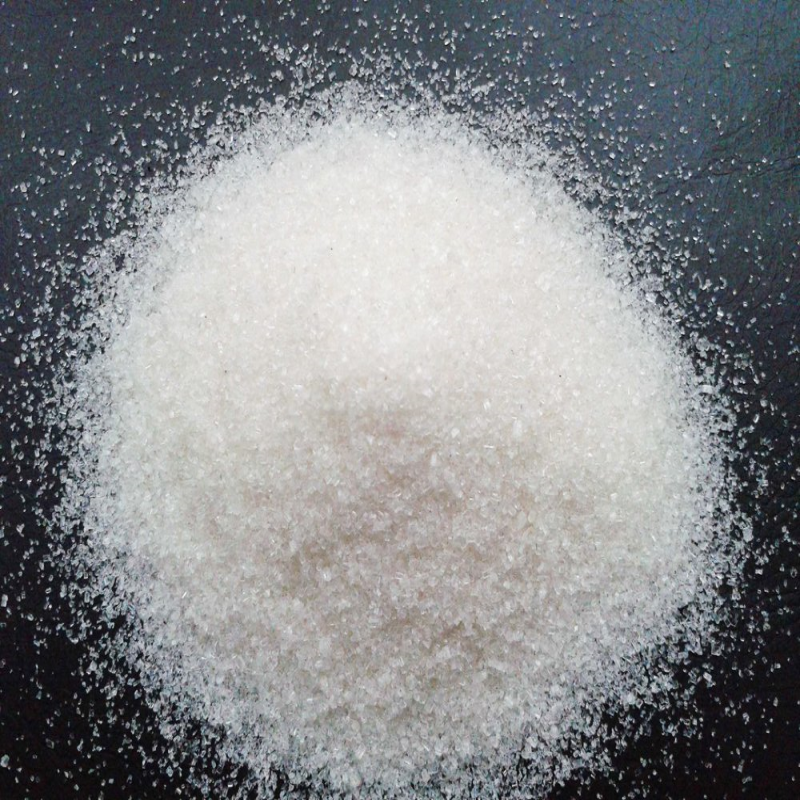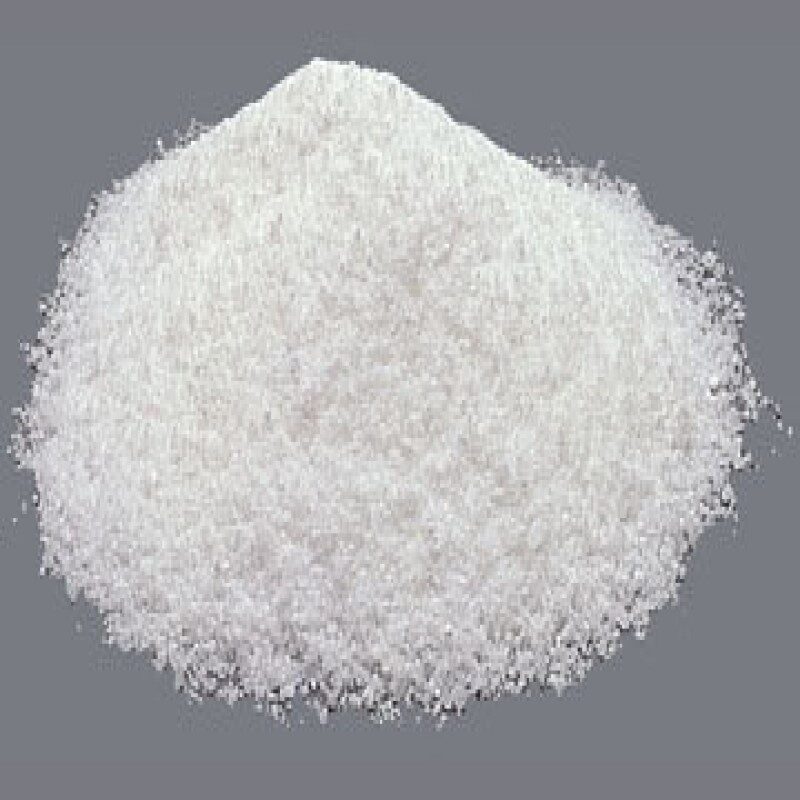Description
Remarks: The material complies as per above specification.
Uses: It is commonly used as a test for sulfate ion. In industry, Barium Chloride is mainly used in
the purification of brine solution in caustic chlorine plants and also in the manufacture of heat
treatment salts, case hardening of steel, in the manufacture of pigments, and in the manufacture of
other barium salts.
Packing: 25 kg HDPE BAGS/HDPE Drum
For AMIZARA SPECILITY CHEMICALS LLP
Barium Chloride FAQs
1. What are the primary applications of Barium Chloride supplied by Amizara Speciality Chemicals?
Amizara Speciality Chemicals’ Barium Chloride is commonly used in industries such as ceramics, fireworks, and water treatment, serving as a source of barium ions for various processes
2. How does Amizara Speciality Chemicals ensure the purity and quality of its Barium Chloride product?
Our Barium Chloride undergoes stringent quality control measures to ensure high purity levels and compliance with industry standards, guaranteeing consistent performance and reliability in diverse applications.
3. Is Barium Chloride from Amizara Speciality Chemicals available in different forms or grades?
Yes, we offer Barium Chloride in various forms and grades to meet the specific requirements and preferences of different industries and applications, providing flexibility and customization options for our customers.
4. What safety precautions should be observed when handling Barium Chloride supplied by Amizara Speciality Chemicals?
It is important to handle Barium Chloride with care, following recommended safety procedures and guidelines to minimize exposure and potential health risks associated with its handling and use.
MSDS
Barium Chloride Dihydrate MSDS Sheet, Material Safety Data Sheet
Section 1: Product Identification
| Product Name & Other Names |
Calcium Carbonate, Carbonic acid calcium salt; calcite; aragonite; limestone. |
| CAS No. |
471-34-1
1317-65-3 |
| EINECS EC Number |
2207-439-9
215-279-6 |
| Molecular Weight |
100.09 |
| Chemical Formula |
CaCO3. |
| Relevant uses and uses advised against (if any) |
Laboratory Chemicals and Industrial Manufacturing Use |
| Suppliers |
As per letterhead. |
Section 2 : Hazards Identification
GHS, Globally Harmonized System Classification in accordance with 29 CFR 1910 Classification according to Regulation (EC) No 1272/2008
| Not a hazardous substance or mixture according to Regulation (EC) No. 1272/2008. |
This substance is not classified as dangerous according to Directive 67/548/EEC. |
Labeling according to GHS & Regulation (EC) No 1272/2008
GHS Label Elements
|
NONE |
| Signal Words |
NONE |
| Hazard statements |
May causes mild skin irritation.
May causes mild eye irritation. |
Precautionary statements
| P261 |
Avoid breathing dust/fume/gas/mist/vapors/spray. |
| P262 |
Do not get in eyes, on skin, or on clothing. |
| P281 |
Use personal protective equipment as required. |
| P302+P352 |
IF ON SKIN: Wash with plenty of soap and water.. |
| P303+P361+P353 |
IF ON SKIN (or hair): Remove/Take off immediately all contaminated clothing. Rinse skin with water/shower. |
| P304 + P340 – IF INHALED |
Remove victim to fresh air and keep at rest in a position comfortable for breathing. |
| P305 + P351 + P338 – IF IN EYES |
Rinse cautiously with water for several minutes.Remove contact lenses, if present and easy to do. Continue rinsing. |
| P337+313 |
If eye irritation persists get medical advice/attention.. |
Section 3: Composition and Information on Ingredients
| Ingredient |
Calcium Carbonate |
| CAS No. |
471-34-1
1317-65-3 |
| EINECS |
207-439-9
215-279-6 |
| Percent |
95 – 100% |
Section 4: First Aid Measures
Always seek medical advice after the first aid treatment.
| Skin |
Wash off with soap and plenty of water. |
| Eyes |
Wash eyes with plenty of water for at least 15 minutes, lifting lids occasionally. Seek Medical Aid. |
| Inhalation |
Remove to fresh air. If not breathing, give artificial respiration. If breathing is difficult, give oxygen. |
| Ingestion |
If swallowed, induce vomiting immediately after giving two glasses of water. Never give anything by mouth to an unconscious person. |
Section 5: Fire and Explosion Data
| Fire |
Calcium Carbonate is not considered to be a fire hazard. |
| Explosion |
Not considered to be an explosion hazard.. |
| Not considered to be an explosion hazard. |
Use means suitable for extinguishing surrounding fire |
| Spoecial information |
In the event of a fire, wear full protective clothing and NIOSH-approved self-contained breathing apparatus with full face piece operated in the pressure demand or other positive pressure mode. |
Section 6: Accidental Release Measures
| Personal precautions, protective equipment, and emergency procedures |
Avoid breathing dust/fumes/gas/mist/vapors/spray. Use individual protective equipment (waterproof boots, suitable protective clothing, safety glasses, etc). Restrict unprotected personnel from the area. Prevent any contact with hot surfaces. Do not approach facing the wind. Do not touch the spilled material. |
| Environmental precautions |
Do not let the roduct enter drains, soil, or water sources |
| Methods and materials used for containment Cleanup procedures and Storage |
Contain spilled material. Vacuum or sweep up and remove to an approved disposal container. |
Section 7: Handling and Storage
| Precautions for safe handling: |
Apply according to good manufacturing and industrial hygiene practices. Ensure proper ventilation. Wash thoroughly after handling. Do not drink, eat, or smoke while handling. Avoid contact with skin, eyes, and clothing. Minimize dust generation. Avoid breathing dust/fumes/gas/mist/vapors/spray.
Avoid contact with eyes, skin, and clothing. Keep container tightly closed. Avoid ingestion and inhalation. Use individual protective equipment (waterproof boots, suitable protective clothing, safety glasses, etc.). Prevent any contact with hot surfaces. |
| Conditions for safe storage, including any incompatibilities |
Store in cool, dry and ventilated area away from heat sources and protected from sunlight in tightly closed original container.
Keep air contact to a minimum. Do not leave the material container open.
Store protected from heat, sparks and ignition sources and incompatible materials.
Avoid contact with skin and eyes. Avoid inhalation of dust/mist/vapor.
Do not store with incompatible materials like acids, fluorine, magnesium with hydrogen. |
Section 8: Exposure Controls/Personal Protection
| Engineering Controls |
Use process enclosures, local exhaust ventilation, or other engineering controls to keep airborne levels below recommended exposure limits.
If user operations generate dust, fume, or mist, use ventilation to keep exposure to airborne contaminants below the exposure limit. |
| Personal Protection |
Safety glasses. Lab coat. Dust respirator. Be sure to use an approved/certified respirator or equivalent Gloves.. |
| Personal Protection in Case of a Large Spill |
Splash goggles. Full suit. Dust respirator. Boots. Gloves. A self-contained breathing
apparatus should be used to avoid inhalation of the product. Suggested protective
clothing might not be sufficient; consult a specialist BEFORE handling this product. |
Exposure Limits
| TWA |
15 (mg/m3) from OSHA (PEL) [United States] Inhalation Tota |
| TWA |
5 (mg/m3) from OSHA (PEL) [United States] Inhalation Respirable. |
| TWA |
10 (mg/m3) from ACGIH (TLV) [United States]. |
| TWA |
10 (mg/m3) [United Kingdom (UK)] Inhalation Total |
| TWA |
4 (mg/m3) [United Kingdom (UK)] Inhalation Respirable.3
Consult local authorities for acceptable exposure limits. |
Section 9: Physical and Chemical Properties
| Appearance |
Calcium Carbonate is fine, white powder. |
| Odor |
Odorless |
| Odor threshold |
Not available. |
| pH |
7 |
| Relative density |
2.7 – 2.95 |
| Melting point |
825C (1517F). |
| Initial boiling point and boiling range: |
Not available. |
| Flash point |
Not available. |
| Auto-ignition temperature: |
Not available. |
| Decomposition temperature: |
Not available.. |
| Upper/lower flammability or explosive limits |
Not available. |
| Vapor Pressure : |
Not available |
| Vapor Density : |
Not available. |
| Evaporation rate: |
Not available. |
| Flammability (solid, gas): |
Not available. |
| Partition coefficient: n-octanol/water |
n-octanol/water: Not available. |
| Solubility: |
0.001 gm in 100 ml water, soluble in dilute acids. |
| Viscosity: |
Not available. |
Section 10:Stability and Reactivity
| Stability |
Calcium Carbonate is stable under ordinary conditions of use and storage. |
| Hazardous Decomposition Products |
When heated to decomposition (825C), emits calcium oxide fmes and liberates carbon dioxide |
| Hazardous Polymerization |
Will not occur. |
| Incompatibilities |
Acids, fluorine, magnesium with hydrogen
. |
| Conditions to Avoid |
Heat, incompatibles. |
Section 11: Toxicological Information
| Acute toxicity |
LD50 Oral – Rat – 6,450 mg/kg(Calcium carbonate). |
| Carcinogenicity |
No component of this product present at levels greater than or equal to 0.1% is identified as probable, possible or confirmed human carcinogen by IARC, ACGIH, OSHA and NTP |
| Mutagenic Effects |
Not Available |
| Developmental Toxicity |
Not available. |
| Reproductive Effects |
No information available.
Although pure Calcium Carbonate is quite safe in handling, impurities in it can be damaging. |
Section 12: Ecological Information
| Environmental Fate: |
No information found |
| Environmental Toxicity |
No information found. |
| Persistence and Degradability |
No information found. |
| Mobility |
No information found |
| Bioaccumulation/ Accumulation |
No information found |
| Results of PBT and vPvB assessment |
No data available for assessment |
Section 13: Disposal Considerations
Whatever cannot be saved for recovery or recycling should be managed in an appropriate and approved waste disposal facility. Processing use or contamination of this product may change the waste management options. State and local disposal regulations may differ from federal disposal regulations. Dispose of container of and unused contents in accordance with federal, state and local requirements.
Section 14: Transport Information
| DOT (US) ADR/RID |
Not dangerous goods |
| ADR/RID |
Not dangerous goods |
| IMDG |
Not dangerous goods |
| IATA |
Not dangerous goods |
Section 15: Other Regulatory Information
USA :
| SARA 313 |
Not applicable. |
| SARA 311/312 Hazardous Categorization |
Not applicable. |
| Clean Water Act |
Not applicable. |
| Clean Air Act |
Not applicable. |
| Section 313 |
This product does not contain any Proposition 65 chemicals. |
Section 16 : Additional Information
Disclaimer
Our company provides this MSDS information sheet contained herein in good faith but makes no representation as to its comprehensiveness or accuracy. This Calcium Carbonate MSDS sheet is intended only as a guide to the appropriate precautionary handling of the material by a properly trained person using this product. Individuals receiving the information must exercise their independent judgment in determining its appropriateness for a particular purpose.




